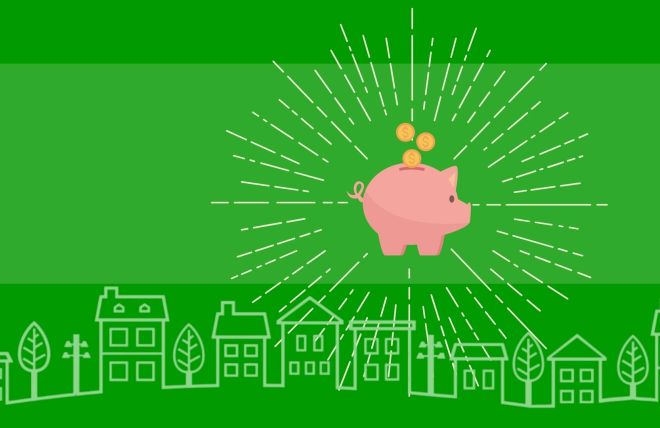The annual Homeowners Association (HOA) meeting is a fundamental event for community governance, enabling members to discuss critical issues, set future directions, and engage in decision-making. This meeting is not only a requirement by law but also a vital opportunity for homeowners to express concerns, understand the community's financial health, and participate actively in shaping their living environment. The annual gathering fosters transparency, cultivates community spirit, and ensures that the neighborhood remains a well-maintained and harmonious place to live.
Scheduling and Notifying Members
Notification is key to ensuring a good turnout. According to most HOA bylaws, members should be notified about the annual meeting 10 to 30 days in advance. This can be done through various channels such as email, community bulletin boards, mailings, or the HOA’s website. The notice should include the meeting’s date, time, location, and a preliminary agenda. Clear communication can increase member engagement and turnout.
- Selecting a date, time, and location that comply with the bylaws and are convenient for the majority of members.
- Sending out notices in advance (as required by the bylaws, usually at least 10-30 days before the meeting), which should include the agenda, date, time, and location of the meeting.
- Providing instructions for remote participation if available.
Setting the Agenda
The agenda is the backbone of the annual meeting. It guides the discussion and helps manage time effectively. Start with standard items: approval of last year’s meeting minutes, the annual financial report, and board elections. Then, add new business items proposed by the board and community members. Ensure these items are communicated in the meeting notice so members have time to prepare for discussion.
Provide a balance between statutory requirements and topics of interest to the community. If there are sensitive issues or significant changes proposed, consider providing background information beforehand to avoid prolonged debates and confusion during the meeting.
Additional Preparation Tips
- Documentation: Have all necessary documents, such as financial reports, minutes from the last meeting, and bylaws, ready and accessible for members.
- Technology: If using presentation tools or conducting parts of the meeting virtually, test your equipment and software ahead of time.
- Venue: Choose a venue that is accessible and comfortable for all members, considering factors like parking, seating, and accessibility for individuals with disabilities.
- Feedback Mechanism: Plan for a structured way to collect feedback or questions from members who cannot attend in person.
- Including mandatory items such as the approval of previous meeting minutes, financial reports, board elections, and any bylaw amendments.
- Adding items submitted by board members and homeowners, ensuring they comply with notice requirements for new business.
- Prioritizing agenda items and allocating time to each to ensure efficient meeting management.
Remember, the specific requirements for scheduling, notification, and agenda setting may vary based on the HOA’s governing documents and local laws, so it's important to consult these documents when planning the annual meeting.
Understanding the distinct roles and responsibilities of HOA board members and homeowners is crucial for the success of an annual meeting. This clarity ensures effective governance and fosters a cooperative environment. Let's delve into the specific duties and how they contribute to a productive meeting.
The Role of the HOA Board
The HOA board is primarily responsible for setting the meeting's agenda, ensuring legal compliance, and facilitating discussions. They handle the administrative side, including scheduling, location setup, and communication with the members. The board also presents annual reports, financial statements, and updates on past and future projects. Key roles within the board for the meeting include:
- Chairperson: Oversees the meeting, ensures adherence to the agenda, and maintains order. They guide the discussion, enforce time limits, and ensure every voice is heard.
- Secretary: Records the minutes of the meeting, documenting decisions, and action items. They also ensure that meeting materials are distributed to members beforehand.
- Treasurer: Presents the annual financial report, explaining expenditures, income, and financial health. They should be prepared to answer queries related to financial matters.
The Role of Homeowners
Homeowners play a vital role in the HOA annual meeting. Their primary responsibilities include reviewing provided materials before the meeting, attending the meeting to voice concerns or support, and voting on decisions and board members. Active participation by homeowners is essential for community transparency and accountability.
Assigning Duties for the Meeting
Assigning specific roles ensures the meeting runs smoothly. Besides the primary roles within the board:
- Greeter/Check-in Volunteer: Assists in welcoming members, checking them in, and providing materials such as agendas, ballots, and feedback forms.
- Timekeeper: Ensures the meeting adheres to the scheduled times for each agenda item to allow for a comprehensive discussion without overrunning.
- Q&A Coordinator: Manages the question and answer segment, ensuring questions are addressed in an orderly and fair manner.
Conducting the annual HOA meeting is crucial for the community’s governance. This section will guide you through the necessary steps to ensure the meeting is effective, inclusive, and compliant with your association's bylaws.
Opening the Meeting and Establishing Quorum
- Start on Time: Begin the meeting at the scheduled time to respect everyone’s commitment.
- Establish Quorum: Verify the number of members present against the bylaws’ requirements to proceed. This typically involves checking in attendees and counting proxies.
- Welcome Remarks: The chairperson should open the meeting with a brief welcome and an overview of the meeting’s objectives.
Reviewing and Approving Previous Meeting Minutes
- Presentation: The secretary presents the minutes from the previous annual meeting.
- Discussion: Allow members to raise corrections or clarifications.
- Approval: Members vote to approve the minutes with any necessary amendments.
Presenting the Annual Report, Including Financials
- Board Reports: Board members present reports on the community’s status, recent achievements, and future plans.
- Financial Report: The treasurer reviews the past year’s financials, including income, expenses, and the budget for the upcoming year. Provide clarity on financial health and field any questions.
- Committee Reports: If applicable, heads of committees present their yearly summaries and plans.
Discussing Agenda Items and New Business
- Scheduled Topics: Discuss items listed on the agenda. This may include maintenance projects, community events, or changes to rules.
- Member Proposals: Address new business or proposals submitted by members prior to the meeting.
- Open Floor: Allow time for members to bring up new issues or concerns, adhering to time limits to keep the meeting on track.
Conclusion and Adjournment
- Summarize Decisions: Recap the decisions made and actions to be taken.
- Next Steps: Outline what will happen following the meeting, including task assignments and upcoming events.
- Adjourn: The chairperson formally closes the meeting, noting the time of adjournment.
- Conclusion:
Effectively conducting the annual HOA meeting strengthens community governance and member engagement. By following these structured steps, your HOA can ensure transparent, efficient, and productive annual meetings.
Voting and Elections
- Procedures for Electing New Board Members: Outline the nomination process, eligibility requirements, and voting methods. Ensure transparency and fairness by explaining how votes are counted and disputes resolved.
- Handling Motions and Voting: Explain the process for making motions, discussing them, and voting within the meeting. Clarify the types of votes that will be taken (e.g., show of hands, secret ballots) and the criteria for passing motions.
Engagement and Participation
- Encouraging Homeowner Participation: Share strategies for increasing member involvement, such as offering various participation methods (in-person, online, proxy), engaging topics, and clear communication.
- Handling Questions and Comments from Members: Set aside dedicated time for member questions and comments, establish ground rules for participation, and provide guidance on how to submit questions before or during the meeting.
Closing the Meeting
- Summarizing Decisions and Actions to be Taken: Before adjournment, summarize key decisions, actions, and assignments made during the meeting to ensure clarity and accountability.
- Setting Dates for Upcoming Meetings: Announce the dates and times of future meetings to keep members informed and engaged.
- Officially Adjourning the Meeting: Formally close the meeting, noting the time and thanking participants for their attendance and contributions.
Post-Meeting Actions
- Documenting and Distributing Minutes: Ensure the minutes are written, approved, and distributed to members in a timely manner. Minutes should accurately reflect discussions, votes, and decisions.
- Following Up on Action Items and Decisions: Outline the steps for implementing decisions and monitoring progress on action items. Assign responsibilities and set deadlines to ensure follow-through.
Best Practices and Tips
- Ensuring Effective and Productive Meetings: Offer tips for running smooth and efficient meetings, such as starting on time, sticking to the agenda, and managing discussions effectively.
- Legal and Ethical Considerations: Remind board members and participants of their legal and ethical responsibilities, including compliance with bylaws, state laws, and maintaining respect and professionalism during discussions.
By adhering to these guidelines, HOA boards can conduct effective and productive annual meetings that foster community engagement, ensure transparent governance, and contribute to the overall well-being of the community.
Sources
- DoorLoop. (n.d.). HOA statistics. Retrieved from https://www.doorloop.com/blog/hoa-statistics
- This Old House Reviews Team. (n.d.). HOA statistics. Retrieved from https://www.thisoldhouse.com/storage-organization/reviews/hoa-statistics
- iPropertyManagement. (n.d.). HOA statistics. Retrieved from https://ipropertymanagement.com/research/hoa-statistics
- Colorado Department of Regulatory Agencies. (n.d.). HOA meetings. Retrieved from https://dre.colorado.gov/hoa-meetings
- Cox, J. (2023, October 31). What the rise of homeowners associations means for Americans. CNBC. Retrieved from https://www.cnbc.com/2023/10/31/what-the-rise-of-homeowners-associations-means-for-americans.html







